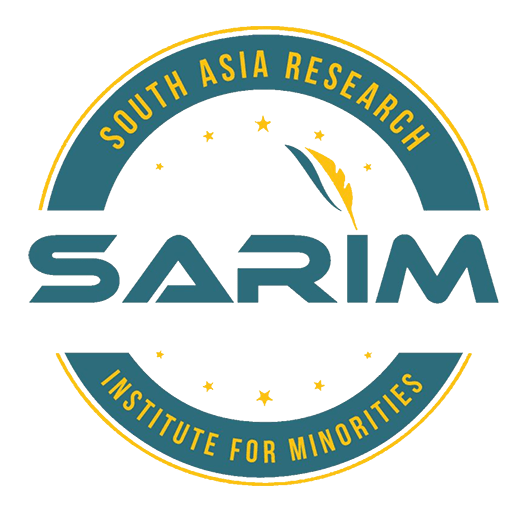Casteism in Science: 98% Professors At Top 5 IITs are Upper Caste, Says Study
At the top 5 IITs and IISc (Bengaluru), 98% of professors are from upper castes, according to the study.

A study in the journal Nature has thrown light on how India’s deeply entrenched caste system limits diversity in science and how privileged groups still dominate some of the country’s elite research institutes.
What else did the study discover? And is the scenario the same when it comes to the field of research? The Quint answers more such questions for you.
A Brief History of Reservation Policy
The reservation policy was written into India’s Constitution in 1950. These policies aimed to uplift marginalised communities by allocating quotas for them in public sector jobs and in education.
The most privileged castes dominated white collar professions, including roles in science and technology.
After many years, India settled on a 7.5 percent quota for Scheduled Tribes (STs) and a 15 percent quota for Dalits (who are referred to in government records as Scheduled Castes (SCs), and were formerly known by the dehumanising term ‘untouchables’).
The hard truth though is that the historically privileged classes (the Generals) still dominate many of India’s elite research institutes.
Dismal Representation at Top-Ranking Institutes
Above the level of PhD students, the representation of Adivasis and Dalits is dismal to say the least.
Less than 1 percent of professors are from these communities at the 23 Indian Institutes of Technology (IITs), according to data provided to Nature under Right To Information requests.
“This is deliberate” on the part of institutes that “don’t want us to succeed”, Ramesh Chandra, a Dalit, who retired as a senior professor at the University of Delhi last June told the journal.
The study found that among undergraduates, Adivasis make up less than 5 percent of the STEM (Science, Technology, Engineering and Mathematics) classes.
Better Representation in the Arts Stream
The study found that Adivasis and Dalits are underrepresented in undergraduate science courses but not arts courses though.
And no, this is not because arts is more popular. It simply is because teachers specialising in science are rare in high schools attended by these students, especially Adivasis, the journal quoted Sonajharia Minz, a computer scientist and Vice Chancellor of Sido Kanhu Murmu University in Dumka, Jharkhand as saying.
Minz is the second Adivasi woman to hold a vice-chancellorship in India.
What is the Situation at the PhD Level?
Further up the academic ladder, the representation of these communities falls at the PhD level, especially at prestigious institutions.
For instance, data for PhD programmes in 2020 at top five IITs— Delhi, Bombay, Madras, Kanpur, and Kharagpur — show an average of 10 percent representation for Dalits and 2 per cent for Adivasis.
Situation Slightly Different for OBCs
Other backward classes (OBCs), make up around 44 percent of science students and 30 percent of medical students at the undergraduate level, according to the study.
As per policies, academic institutions need to have 27 percent of admissions or recruitments from OBCs.
Representation in Faculty
At the top five IITs and the IISc (Bengaluru), 98 percent of professors and more than 90 percent of assistant or associate professors are from privileged castes, according to Nature.
At the Tata Institute of Fundamental Research (TIFR), which has been designated an ‘Institution of Excellence’ and is exempted from following reservation policies, all professors are from the upper castes.
Meanwhile, data on the Department of Science and Technology’s INSPIRE Faculty Fellowships between 2016 and 2020 show that 80 percent of recipients were from privileged castes, while just 6 percent were from SC and less than 1 percent from STs.
The study also showed how some institutes are faring a little better in this regard. At the Council of Scientific and Industrial Research, a group of 38 labs, 18 percent of researchers (combining senior staff grades) were Dalits and 4 perent were Adivasis, according to data received from 31 of those labs.
Funding Gap
While most of India’s research funders do not disclose data on funding by caste, and don’t even collect them in the first place, the Department of Science and Technology (DST), one of the country’s two main science-funding government agencies, shared data with the journal on postdoctoral researchers whom it had awarded INSPIRE Faculty Fellowships.
Between 2016 and 2020, 80 percent of recipients were from privileged castes, just 6 percent were SCs (Dalits) and less than 1 percent were STs (Adivasis).
The DST told the journal the selection was “strictly based on merit”.
Over the past few years, activists, students as well as researchers have been pushing institutions not only to follow quotas but also better support researchers from underprivileged communities.
“We are doing this to hold a mirror to these institutes to show how ugly they are,”a spokesperson for Egalitarians, an organisation that tries to collect and publish diversity data, told the journal.



